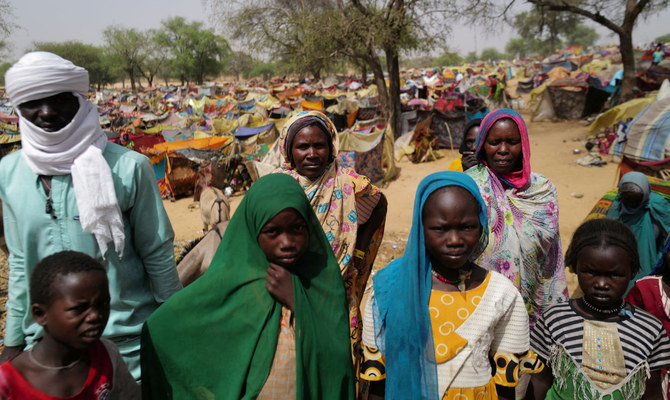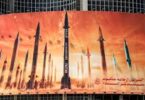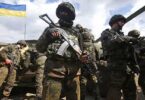Talmiz Ahmad
Sudan has, since last month, been witnessing a serious military confrontation between two of its own generals: Gen. Abdel Fattah Al-Burhan, who heads the nation’s armed forces, and Gen. Mohamed Hamdan Dagalo, popularly called “Hemedti,” who leads a militia, the Rapid Support Forces, or RSF. This month-old conflict has already claimed at least 600 lives, displaced several thousand nationals and plunged the volatile Horn of Africa region into a deep political and economic crisis.
At the heart of the current crisis is the “existential” rivalry between the country’s two generals. Al-Burhan had earlier cooperated to subvert the nascent democratic government in October 2021. However, with no challenge from advocates of democracy, the rivalry between the two generals was exacerbated as each attempted to undercut the other. Al-Burhan started to recruit army personnel from Dagalo’s home base in Darfur, while the latter moved his troops from Darfur to Khartoum.
The framework agreement put together in December 2022 by the “Quad,” made up of the US, the UK, Saudi Arabia and the UAE, provided a roadmap toward popular participation in governance. This agreement collapsed as neither of the two generals was willing to dilute his political and military authority and financial advantages from control over domestic commercial assets.
On April 15, Dagalo’s RSF launched surprise attacks on several army bases across the country, including in Khartoum. Since then, several ceasefires have gone unheeded, while the trail of killing, displacement and destruction continues unabated. During the latest round of negotiations in Riyadh, the representatives of Sudan’s warring sides have signed up to a framework agreement to protect civilians and allow for humanitarian aid flows into the country. Diplomats have clarified that this is not a ceasefire, though there were hopes that this agreement would eventually lead to one.
This could be wishful thinking. There is continuing fierce fighting not only in Khartoum, but two other strategically important areas — the North Kordofan province in the south and Darfur in the west. North Kordofan lies on the route from Khartoum to Darfur, the home-base of Dagalo and most of his men. It also has an airstrip that gives a military advantage to Burhan’s forces as they control the country’s air force; hence Dagalo’s interest in taking control of this province.
In Darfur, the fighting appears to be between the RSF and local African militants, suggesting a replay of the earlier conflict two decades ago. In both arenas, civilians, including displaced persons, have been caught in the crossfire and have suffered heavy casualties.
Sudan’s recent history is not very reassuring. The country has a population of 45 million and is the third-largest country in Africa. It dominates the geography of northeastern Africa, bordering seven countries — Egypt, Libya, Chad, the Central African Republic, South Sudan, Ethiopia and Eritrea — as well as having an 850 km coastline on the Red Sea. The White and Blue Nile rivers merge in Sudan, providing the country with 60 percent of the Nile River Basin. Sudan lost 75 percent of its oil reserves with the secession of South Sudan in 2011, but it still has gold mines and 80 percent of the world’s gum Arabic, which is used in the food and soft drinks industry and to make cosmetics, glue and paints.
Sudan’s recent history is replete with turbulence. Since 1956, it has experienced more than 15 military coups. Its two civil wars in the south, from 1955 to 1972 and 1983 to 2005, left more than a million dead, while the conflict in Darfur from 2003 to 2020 caused the deaths of another 200,000 people.
Given Sudan’s instability and its location in an extremely volatile region, the conflict is likely to have deleterious implications for its neighbors, particularly those in the Horn of Africa — Ethiopia, Eritrea, Djibouti and Somalia — all of which, with the exception of Djibouti, are in the throes of severe domestic turmoil.
The countries of the Horn, such as Egypt and Chad, have porous borders for refugees fleeing from the region’s conflicts. The present confrontation in Sudan has unleashed a massive movement of refugees. By early May, 42,000 Sudanese had gone to Egypt, 30,000 had left for Chad, more than 27,000 were in South Sudan, nearly 10,000 were in Ethiopia and another 6,000 in the Central African Republic. The UN has warned that, if the conflict continues, more than 800,000 Sudanese could flee their country.
Before this conflict, Sudan itself had accommodated more than 1 million refugees from its neighbors, as well as 2 million internally displaced persons, mainly from Darfur.
With the zero-sum perspective shaping the approaches of both sides, the most likely prospect is a long-drawn-out conflict, with widespread death, displacement and economic privation. Already, Sudan and its seven neighbors have 40 million people experiencing food insecurity and the situation will only get worse, possibly beyond the capacity of international agencies to provide relief. South Sudan’s economy could also collapse; being landlocked, the only outlet for its oil exports is a pipeline through Sudan.
A prolonged conflict would also sound the death knell for democratic aspirations in Sudan, as well as the prospect of the country emerging as the breadbasket of the Middle East. The Red Sea, already at the center of geopolitical competitions, will see greater big power activity as a result of a prolonged conflict. This could also lure extremist forces, which thrive on state breakdown to spread their messages of hate and wanton violence. All of this will lead to state disintegration and warlords claiming control over bits of valuable real estate for personal advantage. State breakdown will encourage greater drug and human trafficking from Sudan to Libya and on to the Mediterranean.
Unless both of Sudan’s feuding generals are exiled and a democratic process reinitiated, the country faces breakdown and ruin, with its neighbors being dragged into the quagmire as well.







